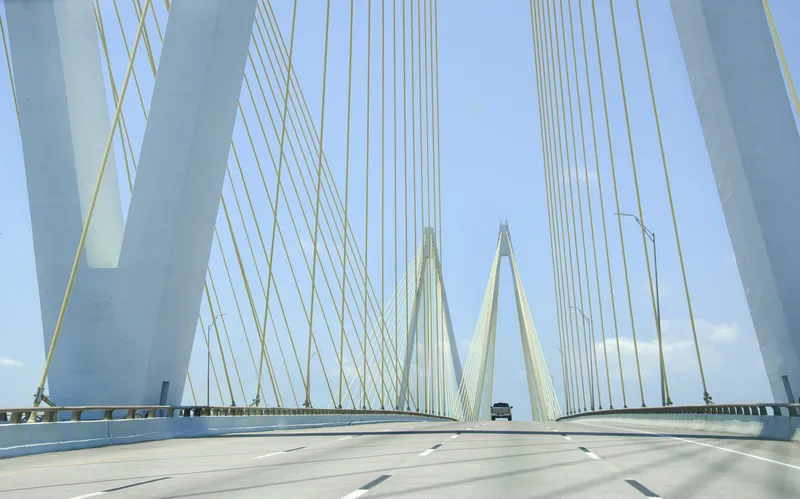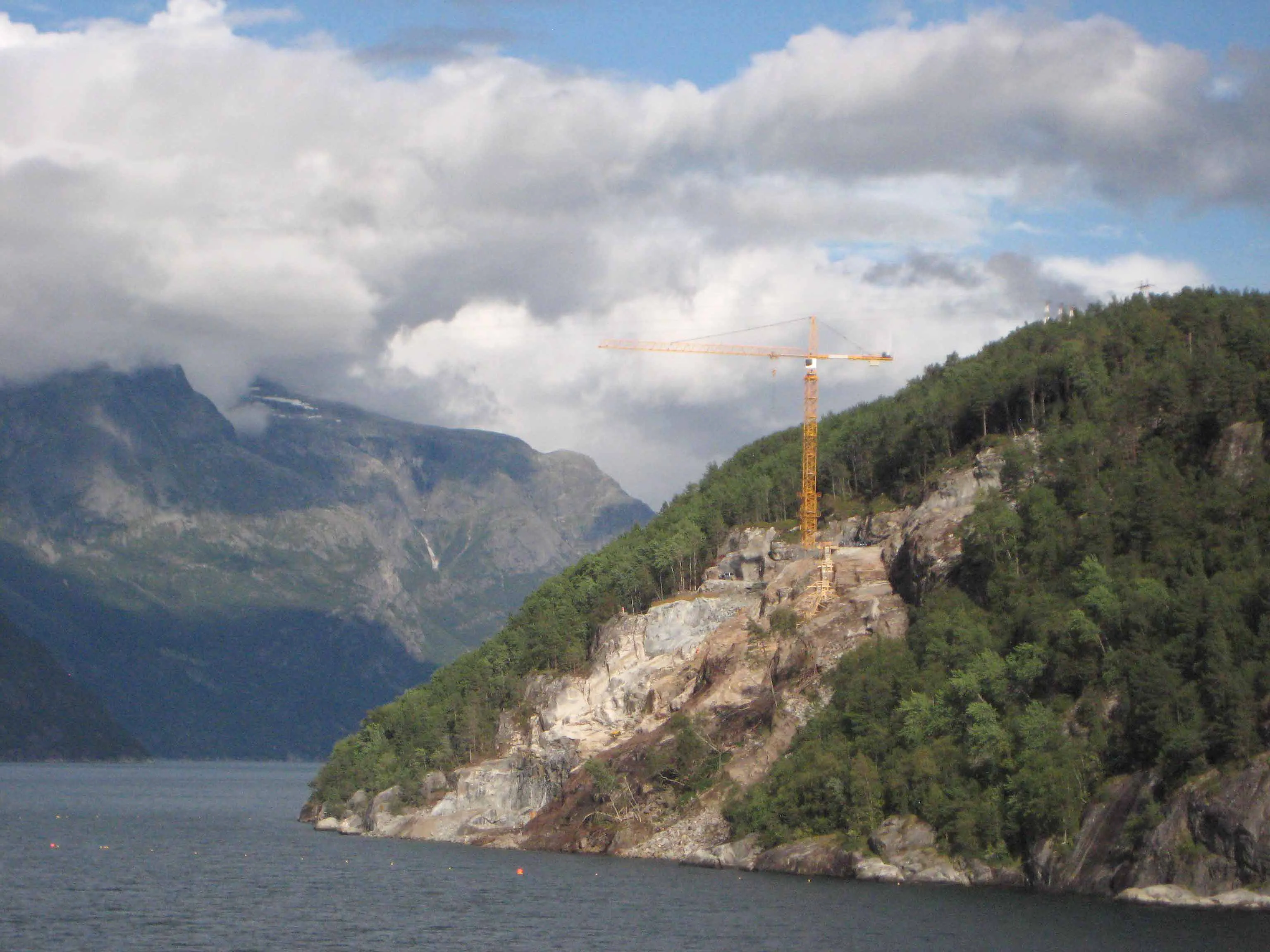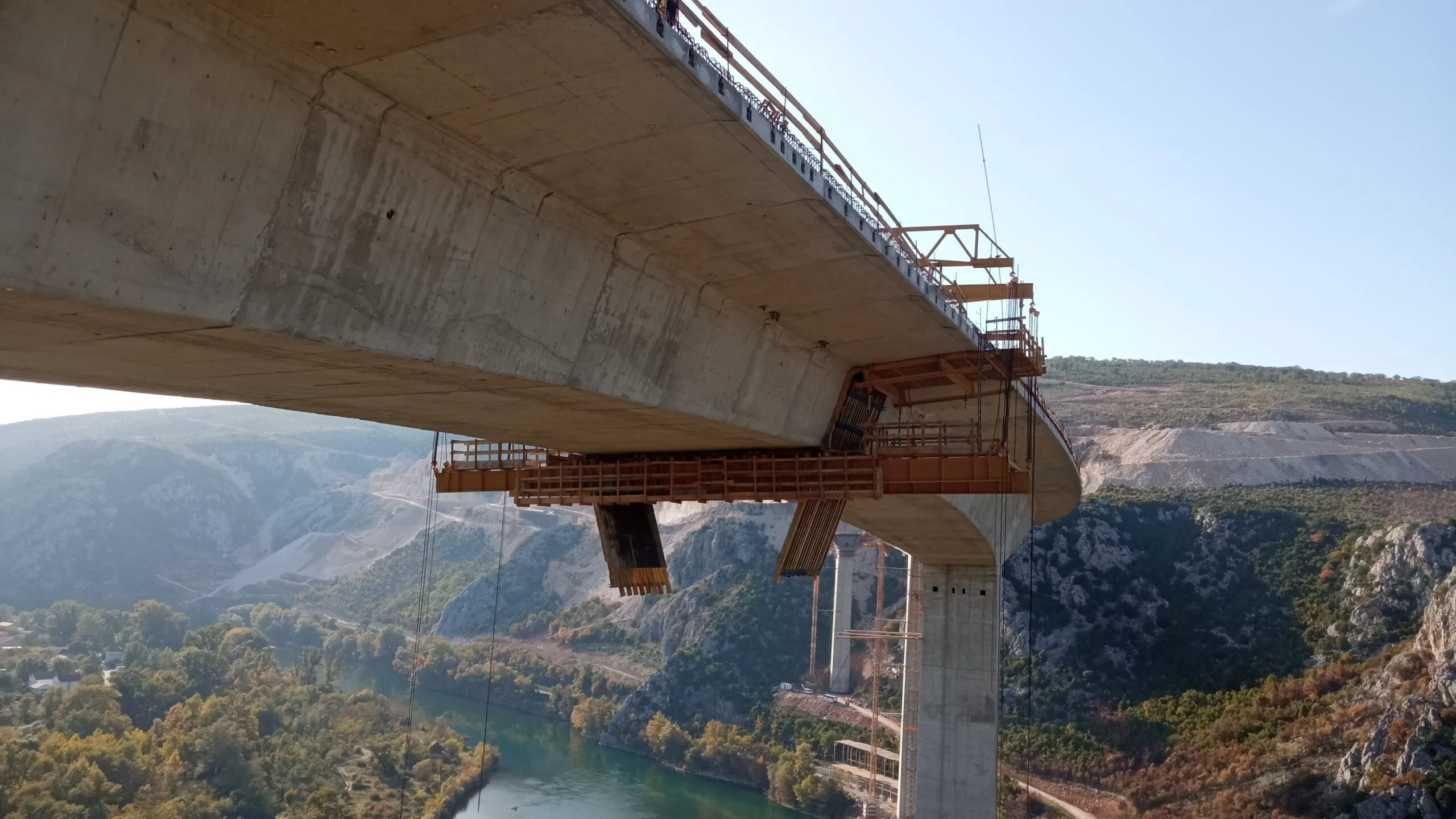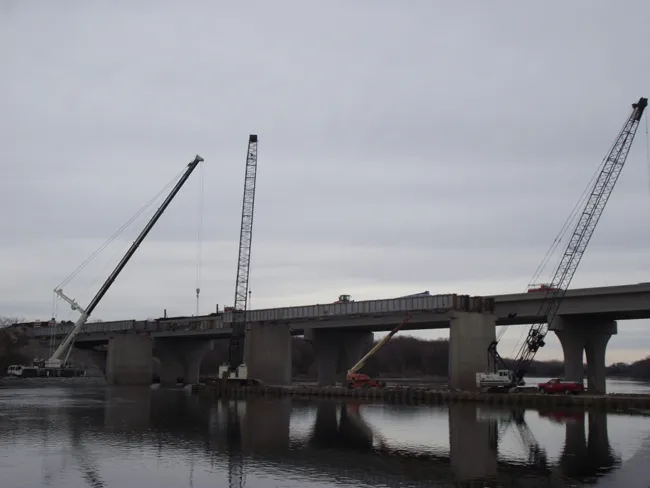One of the world’s largest cranes has placed the first steel girder assembly for the approach span of the new NY Bridge, often called the Tappen Zee Bridge in New York.
The barge-mounted I Lift NY super crane with its nearly 100m boom slowly picked up the 125m unit from its delivery barge and gently lowered it onto concrete pedestals in the Hudson River, near the Rockland County side of the bridge.
The super crane will install even larger sections of the new bridge, some of which weigh around 907tonne
June 25, 2015
Read time: 3 mins
One of the world’s largest cranes has placed the first steel girder assembly for the approach span of the new NY Bridge, often called the Tappen Zee Bridge in New York.
The barge-mounted I Lift NY super crane with its nearly 100m boom slowly picked up the 125m unit from its delivery barge and gently lowered it onto concrete pedestals in the Hudson River, near the Rockland County side of the bridge.
The super crane will install even larger sections of the new bridge, some of which weigh around 907tonnes, in the coming weeks, according to a statement on the official website of the Tappen Zee Bridge. I Lift NY will also help dismantle the existing 60-year-old structure that was designed to carry up to 100,000 vehicles daily but is now handling about 138,000.
The super crane arrived in the Port of New York and New Jersey in January 2014 after a journey of just under 10,000km from San Francisco Bay, including a tight passage through the Panama Canal in Central America. I Lift NY underwent modifications at a private facility before being moved to the New NY Bridge project site.
The crane is owned by TZC - Tappan Zee Constructors - and is officially registered with the US Coast Guard as the Left Coast Lifter.
The first span of the new twin-span bridge is scheduled to open in 2016 with full opening planned for 2018. The new bridge is designed to last 100 years without major structural maintenance, according to the official bridge website.
It will have eight traffic lanes, four breakdown/emergency lanes, as well as a dedicated commuter bus lane from the day it opens. Designed and constructed to be mass-transit-ready, the new crossing will be able to accommodate bus rapid transit, light rail or commuter rail in the future. The bridge will also include a bike and pedestrian path.
The New NY Bridge project is design-build contract worth $3.9 billion and won by consortium Tappan Zee Constructors. Companies include6343 Fluor, 1021 American Bridge, Granite, and 1014 Traylor Bros., along with key design firms 2418 HDR, 4121 Buckland & Taylor, URS and GZA.
TZC is working closely on the project with a team of employees from the New York State Thruway Authority and the State Department of Transportation.
The barge-mounted I Lift NY super crane with its nearly 100m boom slowly picked up the 125m unit from its delivery barge and gently lowered it onto concrete pedestals in the Hudson River, near the Rockland County side of the bridge.
The super crane will install even larger sections of the new bridge, some of which weigh around 907tonnes, in the coming weeks, according to a statement on the official website of the Tappen Zee Bridge. I Lift NY will also help dismantle the existing 60-year-old structure that was designed to carry up to 100,000 vehicles daily but is now handling about 138,000.
The super crane arrived in the Port of New York and New Jersey in January 2014 after a journey of just under 10,000km from San Francisco Bay, including a tight passage through the Panama Canal in Central America. I Lift NY underwent modifications at a private facility before being moved to the New NY Bridge project site.
The crane is owned by TZC - Tappan Zee Constructors - and is officially registered with the US Coast Guard as the Left Coast Lifter.
The first span of the new twin-span bridge is scheduled to open in 2016 with full opening planned for 2018. The new bridge is designed to last 100 years without major structural maintenance, according to the official bridge website.
It will have eight traffic lanes, four breakdown/emergency lanes, as well as a dedicated commuter bus lane from the day it opens. Designed and constructed to be mass-transit-ready, the new crossing will be able to accommodate bus rapid transit, light rail or commuter rail in the future. The bridge will also include a bike and pedestrian path.
The New NY Bridge project is design-build contract worth $3.9 billion and won by consortium Tappan Zee Constructors. Companies include
TZC is working closely on the project with a team of employees from the New York State Thruway Authority and the State Department of Transportation.









